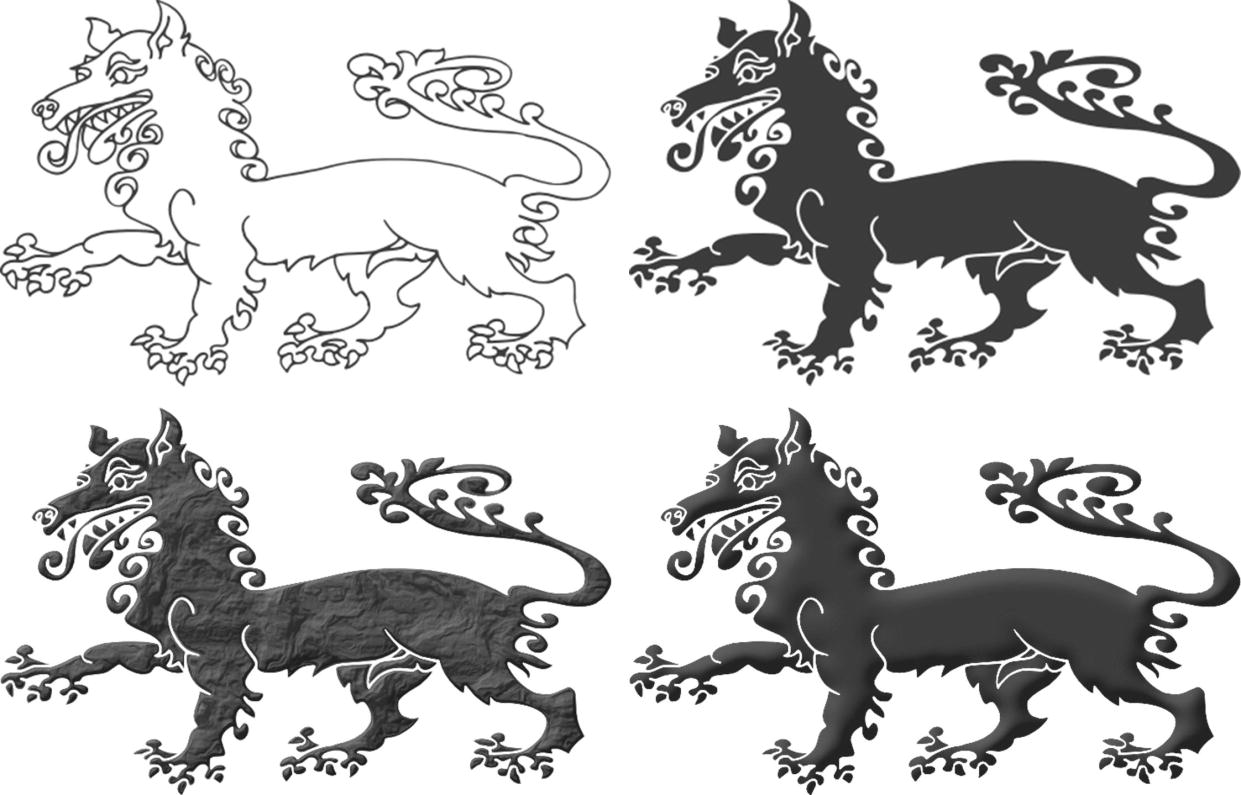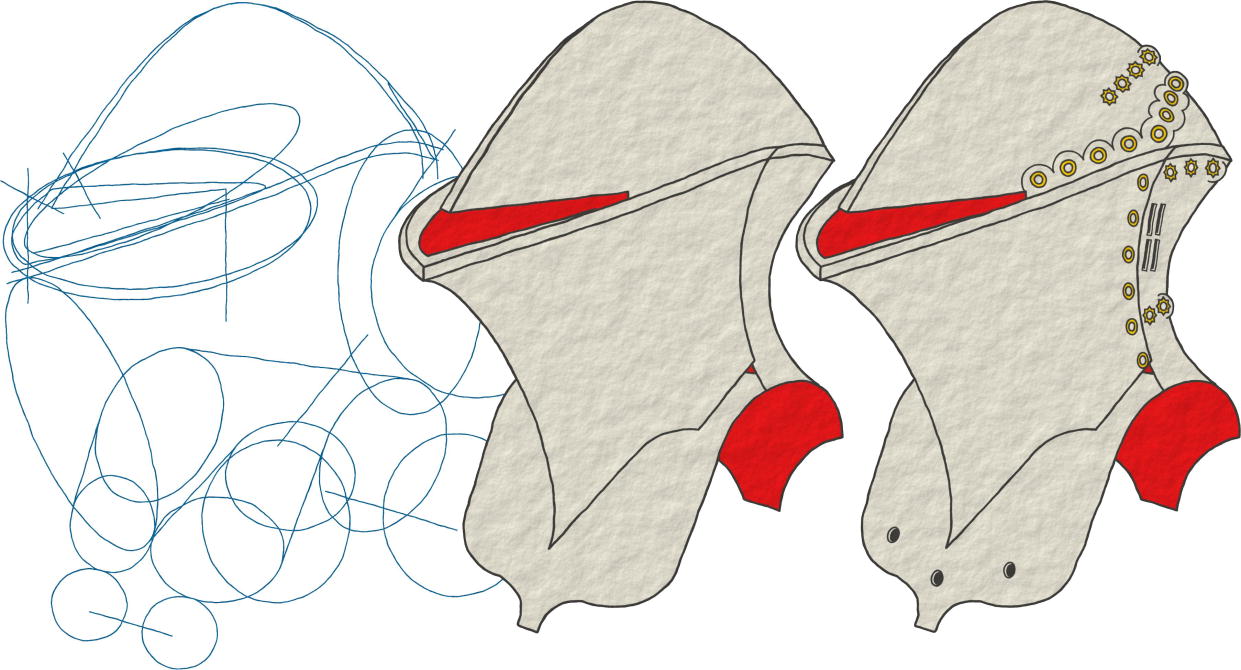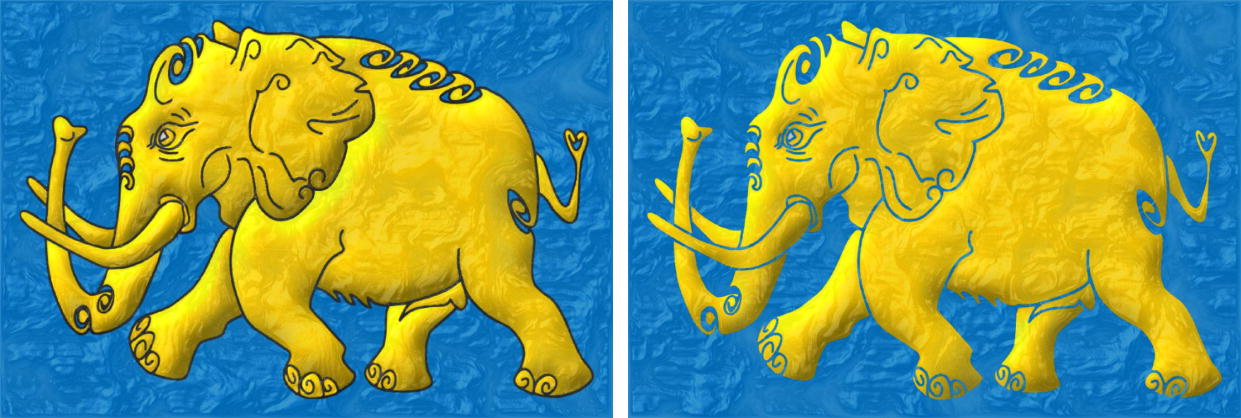
Bearers of the coat of arms by name
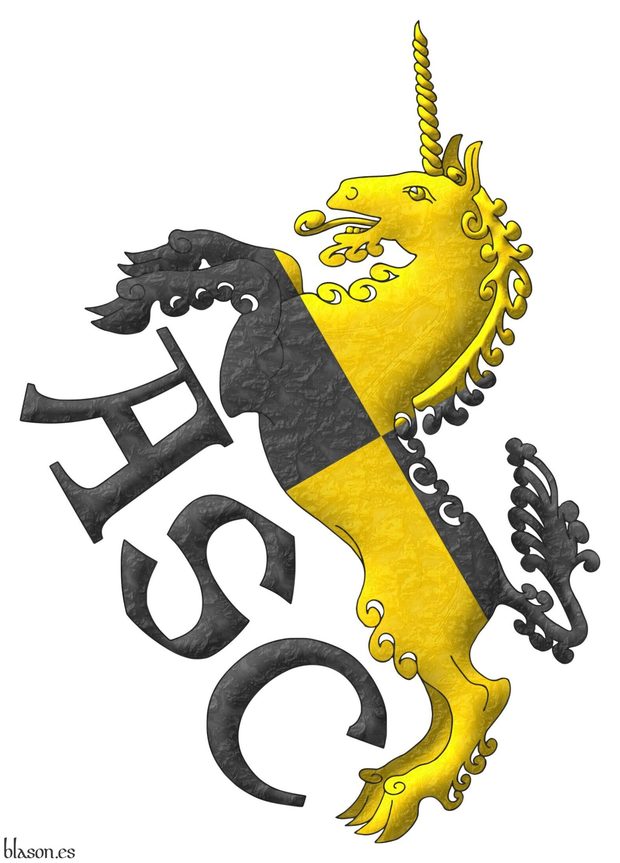
Index of the bearers of the coats of arms ordered alphabetically by name of the bearer:
~ A ~
- Abbasi, Tariq
- Adrian V
- Alarcon of Cantabria, lineage
- Alborán, Sea of
- Albrecht Dürer
- Alcantara, Cavalry Regiment
- Alea Capital
- Alfonso IX of Leon
- Alfonso VIII of Castile
- Almeria, city of
- Almorrabides of Navarre
- Alphonse X of Castile
- Altnau, Yuri Alexander
- Alu, Graziano
- Anderson of Erbury
- Andreou, Kimon
- Angueira Duro, Jesus
- ANPC
- Antrobus, Thomas
- Appleton, David B.
- Aragon
- Araneta, lineage
- Aras Quirce, Manuel Maria
- Argote de Molina, Gonzalo
- Argudo of Guipuzcoa, lineage
- Argüello of Extremadura, lineage
- Arithmetic
- Arjona Berrocal, Rubén
- Arrano Beltza
- Artillery Combat School of the Swedish Army
- Aspe, Julio Hector
- Asuncion and de la Asuncion, lineages
- Aybar of Navarre
~ B ~
- Bailleul, commune of
- Balaguer, municipality of
- Balchin, Robert George Alexander
- Baldovino from Venecia, lineage
- Barrio Alto of Mon'Tarena
- Barrio Bajo of Mon'Tarena
- Barrio de los Quereres of Mon'Tarena
- Barrio del Artista of Mon'Tarena
- Baztanes of Navarre
- Beatrice of Swabia
- Bedgood, Alvin J.
- Bella, Giovanni de
- Bendel, Nathaniel
- Benedict XII
- Benedict XIV
- Beninger, Manuel
- Berenguela of Castile
- Berenguela of Castile, Infanta
- Bergamo
- Berlin
- Bermejo Fernandez-Briceño, Francisco Jose
- Berry of Molland
- Berry, Austin Charles
- Berry, John
- Bessières, Jean-Baptiste
- Blanchefort, Bertrand de
- Bobor, Jan
- Bosnia and Herzegovina
- Boteler of Warrington
- Boyd of Scotland, lineage
- BPAC I
- BPAC II
- Brady, John
- Breu, Stephan Urs
- Brim-DeForest, Brady
- British Monarchy
- Brutus of Britain
- Buffenbarger, Herbert Leo
- Bunyoro-Kitara
- Burgos, University of
- Burr, lineage
- Byrne, Margaret
~ C ~
- Cáceres, Province of
- Candasnos, municipality of
- Castile and León
- Castilla-La Mancha
- Categories of heraldry
- Ceballos of Cantabria, lineage
- Central Military Region
- Cerda, Carlos de la
- Ceuta
- Charles Dunne, Chas
- Charles III of the United Kingdom
- Charles V of France
- Charles VII of France
- Clement V
- Clement XII
- Clermont, Robert of
- Club Ecuestre Val'Quirico
- Colebrand, William de
- Congregación del Oratorio de San Felipe Neri de Alcalá de Henares
- Correa, Lorena
- Coulot, Fabian
- Craon, Robert de
- Crepsi
- Cristina, The Knights of
- Csernely
~ D ~
- Daubeny, Philip
- Daubeny, Rauf
- Del Fabbro Universidad
- Dubai Office of the European Chamber of Digital Commerce
- Dukat, family of Milos
- Durkan, John Paul
~ E ~
- Edmund Plantagenet
- Edward I of England
- Edward II of England
- Edward IV of England
- Egado, lineage
- Elizabeth II of the United Kingdom
- England, Kingdom of
- Ermengol IX of Urgell
- Eschenlauer, Marc
- Escutia Sánchez, María Dolores
- España Herranz, Angel
- Espeja Avieda, Alejandra
- Espinosa, Diego
- Eugene IV
~ F ~
- Farnese, Alessandro
- Felipe VI of Spain
- Ferdinand II of Leon
- Ferdinand III of Castile
- Fernández Carrizo, Silvio
- Fernández de Córdoba y Carrillo, Diego
- Fernandez de Cordoba, Gonzalo
- Fernández-Cortés y Fonseca, Javier
- Flor, Roger de
- Francis I of France
- Francisca Aras Quirce
- Frank, Markus Hermann
~ G ~
- Gangoiti, lineage
- García Martínez, Daniel
- Garcia-Bosch-de Morales-de Sola née Adriaensen, Heidi
- Georgia
- Germany, Federal Republic of
- Giaimo di Prizzi, Carmen
- Giannelli and Mariana von Atzingen Gorga, Alessandro
- Gifra, Vittorio
- Gilbert des Essarts
- Gittel Bas Reuven, Malka
- Globe, Richard
- Godfrey V, Count of Anjou
- Gómez Morillo, Antonio José
- González Lara, Rubén
- González López, Manel
- Gorges, Ralph de
- Gozo
- Graaf, Jay Geoffrey De
- Granada, Soberana y Muy Noble Orden de la
- Gräupl, Edwin
- Gregorio Lanzagorta Llaguno
- Gregory X
- Grenville, Thomas
- Grimaldi, François
- Gryffindor at Hogwarts
- Grzeszkowiak, Tomasz Arkadiusz
- Guallini, Mario Antonio
- Gudja, municipality of
- Guebara of Navarre
- Gummersbach, Peter Ferdinand
- Gutiérrez Benítez, Jose Manuel
~ H ~
- Haguenau
- Halkosaari, Heikki
- Hartemink, Ralf
- Harten, von
- Hatsis, Mark Antony
- Hector of Troy
- Henry II of England
- Henry III of England
- Henry of Castile, Infante
- Hérail, Gilbert
- Herndon, family of Paul and Kari
- Holy Trinity
- House of Hohenzollern
- Howard II, Dr. James Patrick
- Hradec Králové Region
- Hufflepuff at Hogwarts
- Hunzinger, Moritz
~ I ~
~ J ~
- James I of Aragon
- James II of Urgell
- Jamilena
- Janovsti of Janovic of Czechia, lineage
- Jesus Christ
- John I of England
- John XXI
- Juchter van Bergen Quast, Rudolph Andries Ulrich
~ K ~
- Kane, Kathleen
- Kasparek, Rick
- Kingdom of Jerusalem
- Knox, Kelly Kathleen
- Krouse, Chad Michael
- Kupang, Royal House of
~ L ~
- La Forcade, Pierre de
- Labarrieta N, María
- Lancefield, Rex
- Lanzagorta Aras, José María
- Lanzagorta Aras, Juan
- Lanzagorta Escutia, Juan Bautista
- Lanzagorta Escutia, Miguel Francisco
- Lanzagorta Ochoa, Ixai
- Lanzagorta Vallín, Juan
- Lanzagorta-Escutia, marriage
- Larkin, Kevin
- Larrosa Gil, Francisco Domingo
- Lasuncion Patus, Francisco Javier
- László Gábor
- László Linnet Regina
- Latidos Podencos
- Lauria, Roger de
- Laydin, lineage
- Lazaro of Aragon, lineage
- Leonor de Aquitania
- Leonor Plantagenet
- Leonor Princess of Asturias
- Lete of Navarre
- Lincoln's Inn, The Honourable Society of
- Lindsay of Scotland, lineage
- Lindsay of the Byres, lineage
- Liu-Lecomble, Laurent
- Lloscós y Soldevilla, Guilaberto
- Logic
- Lopez Linares, Barbaro Jonathan
- Loubet del Bayle, Jean-Christophe
- Louis IX of France
- Lucca de Anaya, Nilda Ernestina
- Luchoro and Darryn Carlo, Roberto
- Lucius III
- Lukas Podlipny
~ M ~
- Manning, Baz
- Manuel of Castile, Infante
- María Asunción de León González
- Marinanza, Marilena
- Mark of Germany, lineage
- Mark, County of
- Martos García, Juan Carlos
- Mauleón of Navarre
- Mayrl, Kurth
- McCarthy, Eugene
- McCartney, Michael
- McMillan Bell of Auchinreoch, Andrew Ronald
- Mediterranean, Sea of the
- Merante Critelli, Luigi
- Milian, family
- Moguer, municipality of
- Molay, Jacques de
- Montbard, André de
- Monteagudo of Navarra
- Montesa, Cavalry Regiment
- Morgan, Eóin S.
- Morgan, Michael W.
- Mortés, Jean
- Muscat, John
~ N ~
- Nastri, Marcio Vieira
- Navarre
- Nelson, Matthew
- Noblemen of Navarre
- Normand Delfin, Jacques William
- Northam, Jason Landers
~ O ~
- Odysseus of Ithaca
- Ordo Equestris Reginae Caeli
- Ormazabal of the Basque Country, lineage
- Ormazabal-Lazaro, family
- Orrantia of the Basque Country, lineage
- Oschoven of the Rhin
- Osona, lineage
- Otxoa Magaña, Teresa
- Our Lady of Mercy, Order of
- Oyervides Ochoa, Luis Gerardo
~ P ~
- Patus, lineage
- Peraza of Cantabria, lineage
- Peregrina Corona, Dolores
- Pérez de Bartolome, Ignacio
- Persad, Ria
- Pesquera de Ebro
- Peter II of Urgell
- Peter IV of Aragon
- Peñafort, Universidad
- Philip III of France
- Philip of Castile, Infante
- Pius V
- Ponce I of Urgell
- Pons Paneque, Jonathan
- Portugal
- Postolovski, Dario
- Pototsky, Yaroslav
- Power, Guy Harold
- Prato di Arnesano, Marquis
- Pujol, Ignasi
~ Q ~
~ R ~
- Rada of Navarre
- Rage from Discord
- Ramon Berenguer IV, Count of Barcelona
- Rawson, Lineage
- Rehberger, Alena
- Reyes, Elijah
- Rica II, Nick Allen
- Ricardo de Mandeville
- Richard I of England
- Richard, Richard
- Rivas of Aragon, lineage
- Robertson of Struan, lineage
- Rodelo lineage from Galicia
- Romanet, Catherine de
- Romero, Reynaldo
- Rothstein, lineage
- Ruiz Porras, Antonio
~ S ~
- Sainte Croix de la Sabliere, Jean-Yves de
- Sales, Robert Edward
- Sánchez de Perella, Alfonso
- Sancho IV of Castile
- Sancho of Castile, Infante
- Santiago-Vazquez, Lory
- Savoy, Duchy of
- Scotland
- Sendat, Jean-Philippe
- Shakespeare, William
- Shorey, David Ryan
- Shriner, Sean
- Silvestri, Maximilian
- Simon-Faus, family
- Sky, Laird
- Sneddon, Jon
- Sosa-Garcia, Rodolfo
- South Clifton, Lord of
- Spain, Kingdom of
- Spanò, Diego Pantaleone
- Sparkles, Marie Unicorn
- Spiteri Debono, Myriam
- Stauffenberg, Claus von
- Stewart of Scotland, lineage
- Stiebel, Amitay Edward von
- Stowe, Richard Allen
- Strategy Department of Consultoria.IO
- Stuart, John
- Subiça of Navarre
~ T ~
- Taborda, Arturo
- Technical University of Madrid
- Tercio Alessandro Farnese
- Tercio Great Captain
- Teresa of Entenza
- Terraza of Aragon, lineage
- Thompson, Alton
- Thompson, Donnie
- Trading Pro School
- Tremelay, Bernard de
- Triana, Hacienda de
- Triangulation
- Trujillo Jiménez, Hermanos
- Twist, Michael
~ U ~
- Ukraine
- University of Navarra
- Urban IV
- Urban V
- Urban VI
- Urgell, County of
- Urroz of Navarre
- Uschiolo and Ustiolo, lineages
~ V ~
- Valecha, Ajay Gopal
- Vallín de Lanzagorta, María Concepción
- Vaz, Rui J.
- Vega Lanzagorta, Sister Esperanza
- Vermandois, County of
- Vernoy, French family of Fr. Marc
- Vichiers, Renaud de
- Vidaurre of Navarre
- Vidriales García y Bustamante, Carlos
- Vidriales, C. M.
- Vidriales, M. P.
- Villauriz Álvarez, José Manuel
- von Haimb, Isadora
~ W ~
~ Y ~
~ Z ~


![Ver [Parsons, R. J.; 1989] en referencias bibliográficas. Libro abierto, hojas de plata, filo de oro, guardas de gules, tapas de sable.](../css/Libro.Bibliografia.png)
Parsons, R. J.; 1989
Robert John Parsons, heraldic painter at the College of Arms, «The Herald Painter», is an article derived from the lecture given by R. J. Parsons at The Heraldry Society on January 18, 1989, at the premises of «The Society of Antiquaries» at Burlington House, London, and later published in Coat of Arms, COA, An Heraldic Quarterly Magazine, issue 146, The Heraldry Society, Baldock, Hertfordshire, summer of 1989.
This article presents a historical review of the heraldic painters at the «College of Arms» and analyzes the creation of coats of arms and other objects like badges, flags, stained glass, seals, etc. It is especially interesting for its view of the current stage of heraldic art and, even more, the description of the author's own working method.
I highly recommend reading this article and, here, I present some of the ideas that I highlighted while studying this text by R. J. Parsons, who is «herald painter to Her Majesty's College of Arms».
Tradition and innovation in heraldic art
Creativity, innovation, and achieving a unique style are fundamental characteristics of any self-respecting artist, but when artists enter the realm of heraldry and, especially when working for institutions like the College of Arms, the weight of the norms and rules of heraldry, its long historical tradition, the reverential respect towards it, the language of blazon, the need for a long initiation process, etc. can cause artists to curb their natural impulses, become intimidated, and adhere strictly to rules to avoid criticism, which hinders the introduction of new proposals, ideas, and styles, risking making heraldry a static and time-bound field.
R. J. Parsons' working method
Robert Parsons explains that the first phase of his method is to create the complete drawing of the coat of arms and its ornamentation on tracing paper, starting with the coat of arms and then outlining all the external ornamentation.
He does this considering that the main problem he must solve is reconciling the two-dimensionality of the coat of arms with the three-dimensionality of the external ornamental elements, such as the supporters, mantling, crest, etc. which must be designed as if enveloping the coat of arms. The extent to which this is achieved provides an idea of each artist's skill.
Silhouettes, expressiveness, and balance
R. J. Parsons believes that the silhouettes of the figures probably characterize each artist and their designs the most. For him, each silhouette must be bold and express emotions, and the silhouettes must maintain proportions that give balance to the whole, as there are no rules that guarantee a good aesthetic result.
To achieve boldness and expressiveness in the figures, especially in natural ones, the artist must emphasize certain features and stylize others, resulting in, for example, in beasts and birds, representations that diverge from natural reality.
Shape of the coat of arms and space
All delineation must be done within the chosen mouth shape for the coat of arms. These shapes have evolved over time, and the artist must consider that some shapes facilitate the internal composition of the coat of arms more than others. For example, he highlights the difficulty of fitting the pieces and figures within lozenge-shaped shields, traditionally carried by unmarried women.
Regardless of the chosen shape, pieces and figures must be arranged to use the entire internal space correctly, neither too small to leave space nor too large to make the whole crowded.
External ornamentation
Robert J. Parsons observes that nowadays the protocol rules that used to govern external ornamentation have been greatly relaxed, for example, regarding the shapes, positions, and orientations of the helmets depending on who would be the holder of the coat of arms, and this relaxation has favored art, aesthetics, and the balance of the whole coat of arms.
He states that of all the external ornamentation, and many heraldic artists will agree with him, the most complex to create are the supporters and tenants, and of the three, the tenants, i.e., human figures, are the most difficult.
Human figures do not have a proper heraldic characterization as lions, unicorns, boars, etc., do. The characterization of women and men in heraldry is done through their attire and the objects they carry or accompany them, with ancient attire and objects being the easiest to characterize, while the more modern and, even more so, the more naked they are, the more difficult and challenging it becomes to create heraldically attractive tenants.
As a general rule, Parsons advises that the visual weight of supporters, tenants, and tenants be similar to that of the coat of arms, so that they neither draw all the observer's attention due to their excessive size nor look ridiculous and incapable of performing their function, which is to support the visual weight of the coat of arms.
Tinctures, shadows, edges, and highlights
When he finishes the drawing phase, R. J. Parsons explains how he transfers it to a new paper support and, then:
- he starts by applying the tinctures for the metals,
- the first he applies is gold using gold powder, although it is known that other artists use gold leaf,
- then the metal silver is left as the white of the paper,
- then he proceeds with the colors, using gouache, an opaque watercolor, following the order from light to dark,
- so the first color he applies is gules, which he tends to make somewhat translucent,
- then the mid-tones, azure and vert.
- ending with sable, which he makes warmer with a touch of burnt sienna,
- after applying the tinctures, he adds shadows to suggest forms, noting that some schools say everything should be in flat inks, without shadows or highlights, and even without delineated edges as can be seen, for example, in Norsk Heraldisk Forening,
- then he delineates the silhouettes and
- finishes by adding highlights to bring the composition to life.
The motto or slogan is the last element with which Robert John Parsons completes the creation of a coat of arms.
Bibliographical reference of century XX.
The author is Parsons, Robert John.
The following article cites this bibliographic reference:
External link:
Internal resources: ParsonsRJ1989.TheHeraldPainter.docx.


![Ver [Nieto y Cortadellas, R.; 1957a] en referencias bibliográficas. Libro abierto, hojas de plata, filo de oro, guardas de gules, tapas de sable.](../css/Libro.Bibliografia.png)
Nieto y Cortadellas, R.; 1957a
Rafael Nieto y Cortadellas, «La Generala Santander y sus parientes habaneros los Pontón», 35 pages, 25 centimeters, about the family Sáenz del Pontón, National Archive of Cuba, reprinted edition by the National Archive Bulletin, volume LVI, 1957.
Bibliographical reference of century XX.
Classification: Castilian language.
The author is Nieto y Cortadellas, Rafael.
Bibliographical reference mentioned in the following article:
External resources:


![Ver [Wade, W. C.; 1898] en referencias bibliográficas. Libro abierto, hojas de plata, filo de oro, guardas de gules, tapas de sable.](../css/Libro.Bibliografia.png)
Wade, W. C.; 1898
William Cecil Wade, «The symbolisms of heraldry or A treatise on the meanings and derivations of armorial bearings», 186 pages, 95 black and white pictures, Robert Holmes Collection, published by George Redway, London, 1898.
Although Romanticism sought the symbolism of the heraldic elements, I believe that the meaning of the elements of the coat of arms, if they have it, is provided by its creator or first bearer. In any case, the content of this symbolic book is the following:
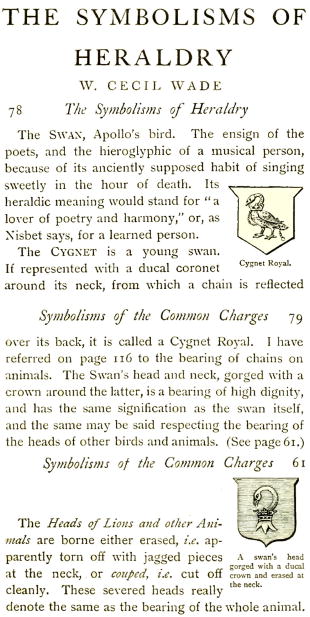
- The origin of armorial bearings; page 11.
- The symbolic side of heraldry; page 13.
- Heraldic colors and metals; page 35.
- The furs of heraldry; page 38.
- The meaning of heraldic lines; page 40.
- The symbolisms of the ordinaries; page 43.
- The division lines of the shield; page 55.
- The colors of the common charges not symbolical, chapter with 2 paragraphs only; page 57.
- Symbolisms of the common charges; page 59.
- Crowns, mitres, episcopal hats, etc.; page 138.
- Examples of symbolisms of colors and armorial bearings; page 149.
- Cadency and differencing; page 154.
- Alphabetic index; page 162.
Bibliographical reference of century XIX.
Classification: Symbolism, In black and white and English language.
Author: Wade, William Cecil.
Bibliographical reference mentioned in the following article:
External link:
Internal resources: WadeWC1898.SymbolismsHeraldry.pdf.


![Ver [Emblemata; 2002] en referencias bibliográficas. Libro abierto, hojas de plata, filo de oro, guardas de gules, tapas de sable.](../css/Libro.Bibliografia.png)
Emblemata; 2002
Baron of Valdeolivos Emblematic Chair, of the Fernando el Catolico Institution, of the Centre of Scientific Research (C. S. I. C.) and of the Government of Zaragoza, «Emblemata», Volume 8th, Emblemata Aragonese Magazine about Emblems (E. R. A. E.), 454 pages, 58 pictures, ISSN 1137-1056, Legal deposit Z.3.937 1996, printed by the Cooperativa de Artes Gráficas Librería General, Zaragoza, 2002.
Bibliographical reference of century XXI.
Classification: Magazine and Castilian language.
The author is Cátedra de Emblemática Barón de Valdeolivos.
External resources:
Internal resources: Emblemata2002.Volumen08.pdf.


Artistic technique in Heraldry
My heraldic art is a mixed of techniques that combine the manual realization with the digital process. The reason is that, for each specific creative activity, I try to choose the technique that best suits the goal I intend to achieve.
Drawing freehand
The natural motives are especially suitable to drawing freehand. I go through this job straight with black ink, without previous pencil schemes, with as long as possible ink traces, without lifting the pen, using 0.1 mm thin feathers, making scrolls automatically, without passing twice through the same point with the same movement. This technique comes from the automatic tracing as referred to in the third stage of the article entitled pictorial evolution and influences.
In figures with an eye I always by it and then follow by the right ear, the hair of the head, left ear, neck, back, tail, circulating at the maximum possible speed in the clockwise direction, skirting the figure to the left front leg, where I stop. Then, I do return to the right ear, down to the nose, mouth, tongue, chin, the lower part of the neck, circulating at the maximum possible speed counterclockwise, bordering the figure until the left front leg, where I stopped in the first round.
This tracing technique has the advantage of generating long lines, which seem to circulate freely, but it has the disadvantage of admitting neither mistakes nor retracings. In case of errors, the suitable choice is to finish the figure, to see the final result and be able to detect possible points of special difficulty towards the end of the tracing and right after to trace the whole figure again in a blank sheet, using the previous one as visual support. The reiterated result is to have to follow this process several times up to reaching a satisfactory level of execution. As a curiosity, I've noticed that the 1st figure often contains errors of ink path, the best is usually the 2nd and in some cases the 3rd, but from the 4th on, although there is no longer errors, the result is often more baroque.
Technical outlining
For the tracing of some figures, especially geometric, I use classic technical drawing skills. In this way vair, vairy, divisions, geometric ordinaries, bordures, checkys, etc. are calculated and outlined technically.
In some cases figures that are delineated technically are also hand-touched in order to compare techniques and be able to select the most suitable technique for the ongoing coat of arms.
Tincture of elements
In order to tincture field, ordinaries and charges I always start with plain colors and metals. In fact all my shields always have a version in plain colors. Then I build the volumes by means of lightings and shadows and applying appropriate finishings, by adding and removing hues and texturing surfaces. In some cases I do this process on the whole shield, in other, more laborious way, each field, ordinaries and charge is treated separately. This technique of working on flat base colors for later lighting and texturing follows my previous graphic work on color coated paper, which are described in the first stage of the article entitled pictorial evolution and influences.
In the final stages I try and choose the best of two options as applied to the already tinctured and finished charges:
- Represent them outlined in sable with its original layout.
- Let the tincture of the shield's field give them their final delineation.
Working process
I perform the workflow mainly over sheets size DIN, in vertical orientation, attaching to drawings annotations, metadata, samples of color, etc. I make and archive these DIN forms sequentially as I go through the steps described in the section entitled heraldic creation methodology.
At the end of the work, all of these DIN forms together, make up what could be called a «making-of» of the coat of arms, that is, the history of their creation process.


![Ver [Brian Timms] en enlaces recomendados. Áncora de oro y la divisa enlace.](../css/Ancora.Enlace.png)
Brian Timms
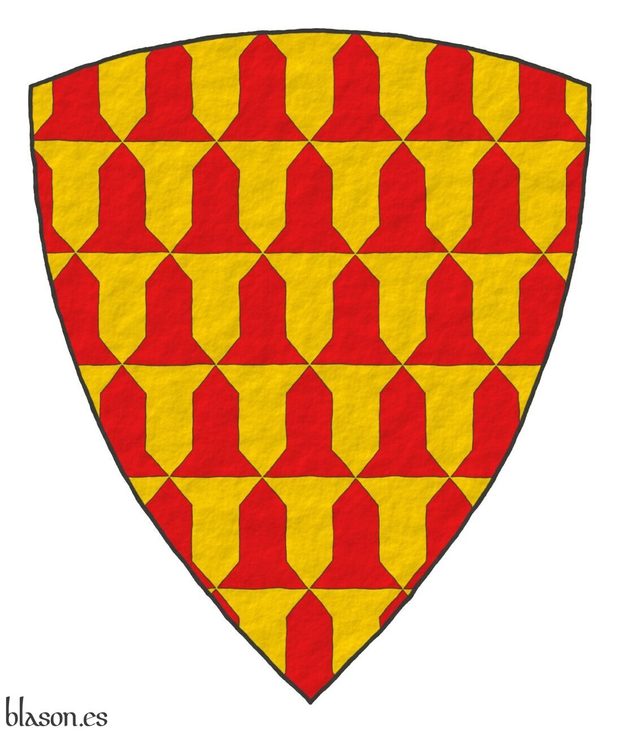
The Brian Timms website, whose domain was, «http://www.BrianTimms.fr», was absolutely admirable.
It took several visits to get an idea of the immense quantity of shields, blazons, armorials, information, and knowledge it contained, and, therefore, all the work behind it.
Armorials
Simply listing the armorials he had studied is enough to highlight the value of Brian Timms' website:
- «Caerlaverock Poem»,
- «Camden Roll»,
- [Charles' Roll; 1285],
- «Chifflet-Prinet Roll»,
- «Collins' Roll»,
- «Dering Roll»,
- «Falkirk Roll»,
- «Galloway Roll»,
- «Glover's Roll»,
- [Heralds' Roll, T.; 1280],
- «Hérault Vermandois, Armorial du»,
- «Le Rôle d'Armes Bigot»,
- «Lord Marshal's Roll»,
- «Parliamentary Roll»,
- [St. George's Roll; 1285],
- «Stirling Roll»,
- «Walford's Roll» y
- «Wijnbergen Roll».
Therefore, this website could be considered, in turn, a true armorial.
Personages and their blazons
The shield accompanying this recommended link is that of Guillermo de Ferrers ~ William de Ferrers for whose interpretation the illustration done by Brian in St. George, Part I, was consulted.
The latest personages and their coats of arms that I consulted, towards the end of March 2016, and which seemed to correspond to recent publications were:
- that of Hugh Burninghill «Sable three bats argent», which corresponded to number 5216 in his numbering,
- that of John Burton «Paly of six or and gules overall onwater budgets bendwise argent», which corresponded to number 5217 in his numbering,
- that of Thomas Burton «Sable a chevron between three owls argent», which corresponded to number 5218 in his numbering,
- that of Rafe Buxhulle «Or a lion rampant azure fretty argent», which corresponded to number 5219 in his numbering, and
- that of John Cavendish «Sable three buck's heads cabossed argent», which corresponded to number 5220 in his numbering.
These numberings would indicate that more than 5,200 blazons were reached; my other estimates indicate that this site might have contained about 5,080 blazons. In any case, Brian Timms' work can be considered prodigious.
Last visit
At the beginning of 2016, a completely renewed version was running, which ceased to be operative at the end of July 2016, corresponding to my last visit on the 20th.
My deductions about the construction of his first site, its subsequent renovation (perhaps around 2006), and my intuitions about the maintenance of this Brian Timms website were taken into account for the construction of my own website.
Category: Link.
External resource:


![Ver [Kevin MacLeod] en enlaces recomendados. Áncora de oro y la divisa enlace.](../css/Ancora.Enlace.png)
Kevin MacLeod
Kevin MacLeod provides on his website incompetech.com music licensed under a Creative Commons Attribution license, version 3.0, (CreativeCommons.org/licenses/by/3.0/).
Kevin states that there are several reasons why he offers this type of free license, for example, because the cost of sharing his music is not high and the benefits are many, and because there are music schools without funds, filmmakers who need soundtracks for their films but cannot afford them. In response to this, Kevin believes that traditional copyright is ineffective and that is why he chose a license like «Creative Commons». He believes that if creative works are protected so rigidly that they become impossible to share and his art cannot be experienced by people, then it serves no purpose in society.
The following video shows an example of a soundtrack, with music by Kevin MacLeod, for a video about a coat of arms.
Category: Link.

Continue with: Jué jù.
-
Language
-
Categories of heraldry
-
Divisions of the field
- Without divisions
- Party per pale
- Party per fess
- Party per bend
- Party per bend sinister
- Tierce
- Tierce sinister
- Tierced per pale
- Tierced per fess
- Tierced per bend
- Tierced pallwise inverted
- Quarterly
- Quarterly per saltire
- Gyronny
- Party per fess, the chief per pale
- Party per pale, the sinister per fess
- Party per fess, the base per pale
- Party per pale, the dexter per fess
- Chapé
- Chaussé
- Embrassé
- Contre-embrassé
- Party per chevron
- Enté
- Enté en point
- Flanched
-
Metals
-
Colours
-
Furs
-
Other tinctures
-
Ordinaries and sub-ordinaries
-
Diminutives of the ordinaries
-
Geometric charges
-
Composite ordinaries
-
Inanimate charges from Nature
Atom, Crescent, Diamond, Emerald, Estoile, Increscent, Lightning flash, Moon, Mount, Mullet, Mullet of four points, Orbital, Plough of Ursa Major, Rainbow, Ray of the sun, River, Sea, Snowflake, Sun, Sun in splendour, Sun of May, Trimount, Water and Wave.
-
Vegetal charges from Nature
Acorn, Apple, Apple tree, Ash, Bluebonnet, Camellia, Chrysanthemum, Cinquefoil, Cornflower, Dogwood flower, Double rose, Elm, Fleur de lis, Flower, Gourd, Holm oak, Hop cone, Kapok tree, Laurel, Lily, Linden, Lotus flower, Madonna lily, Mexican cedar tree, Oak, Olive tree, Palm tree, Plantain plant, Pomegranate, Poplar leaf, Rose, Shamrock, Sunflower, Thistle, Tree, Tulip, Vine and Wheat.
-
Animal charges from Nature
Badger, Bald eagle, Barbel, Barn owl, Bear, Beaver, Beetle, Bighorn sheep, Blackbird, Boar, Brach hound, Bull, Doe, Dog, Dolphin, Dove, Eagle, Elephant, Falcon, Female figure, Fish, Flame, Fly, Fox, Frog, Goat, Goldfinch, Goose, Heron, Horse, Hummingbird, Jaguar, Lark, Leopard, Lion, Lion passant, Lion rampant guardant, Lioness, Lynx, Male figure, Martlet, Merino ram, Owl, Panther, Parrot, Peacock, Pelican, Pelican in her piety, Puffin, Quetzal, Raven, Roe deer, Rooster, Savage, Seagull, Serpent, She-wolf, Stag, Starling, Talbot, Tyger, Vulture, Warren hound and Wolf.
-
Parts of natural charges
Arm, Beak, Branch, Caboshed, Chest, Claw, Covert, Dorsal fin, Eagle claw, Ermine spot, Escallop, Feather, Foot (palmiped), Foreleg, Forepaw, Hand, Head, Heart, Hoof, Leaf, Neck, Ostrich feather, Palm frond, Paw, Roe deers' attires, Shoulder, Sprig, Stags' attires, Stem, Swallow-tail, Tail, Tail addorsed, Tail fin, Talon, Tooth, Trunk, Trunk (elephant), Two hands clasped, Two wings in vol, Udder, Wheat spike, Wing and Wrist.
-
Artificial charges
Ace of spades, Anchor, Anvil, Arch, Arm vambraced, Armillary sphere, Arrow, Axe, Bell, Bell tower, Beret, Bonfire, Book, Bookmark, Bow, Branding iron, Bridge, Broken, Buckle, Cannon, Cannon dismounted, Cannon port, Canopy roof, Carbuncle, Castle, Celtic Trinity knot, Chain, Chess rooks, Church, Clarion, Clay pot, Closed book, Club, Column, Comb, Compass rose, Conductor's baton, Cord, Covered cup, Crozier, Crucible, Cuffed, Cup, Cyclamor, Dagger, Double vajra, Drum, Ecclesiastical cap, Fanon, Federschwert, Fleam, Four crescents joined millsailwise, Galician granary, Garb, Gauntlet, Geometric solid, Grenade, Halberd, Hammer, Harp, Host, Hourglass, Key, Key ward, Knight, Knot, Lantern, Letter, Line, Loincloth, Menorah, Millrind, Millstone, Millwheel, Monstrance, Mortar, Mullet of six points pierced, Nail, Non-classic artifact, Norman ship, Number, Oar, Oil lamp, Open book, Page, Pair of scales, Parchment, Pestle, Piano, Pilgrim's staff, Plough share, Polish winged hussar, Port, Portcullis, Potent, Quill, Ribbon, Rosette of acanthus leaves, Sabre, Sackbut, Sail, Scroll, Scythe, Sheaf of tobacco, Ship, Skirt, Spear, Spear's head, Stairway, Star of David, Step, Sword, Symbol, Tetrahedron, Torch, Tower, Trident, Trumpet, Turret, Two-handed sword, Wagon-wheel, Water-bouget, Wheel, Winnowing fan and With a turret.
-
Immaterial charges
Angel, Archangel, Basilisk, Dragon, Dragon's head, Garuda, Golden fleece, Griffin, Heart enflamed, Justice, Mermaid, Our Lady of Mercy, Ouroboros, Paschal lamb, Pegasus, Phoenix, Sacred Heart of Jesus, Saint George, Sea-griffin, Trinity, Triton, Unicorn, Winged hand and Wyvern.
-
External elements
-
Heraldic creations
-
References
-
Formats
-
Keywords on this page
Artist, Bibliography, Brian Timms, In black and white, Link, Jué jù, Kevin MacLeod, Castilian language, English language, PDF, Kingdom of England, Magazine, Century XIX, Century XX, Century XXI, Symbolism and Index.

